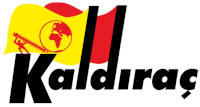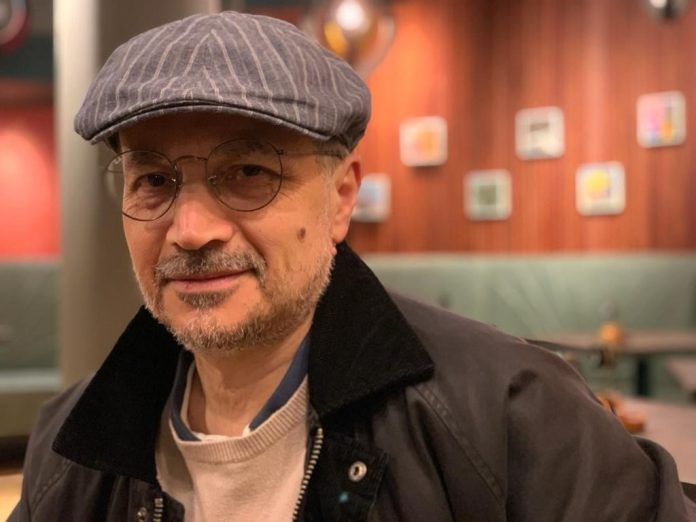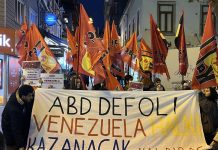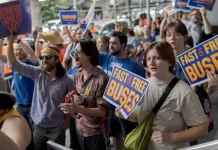Interview with Bahram Soroush Member of the Political Bureau of the Worker-communist Party of Iran
-After the massacre of Mahsa Amini, there has been a wave of rampant, massive and militant protests throughout Iran. Upon that, we have tried to reach Iranian socialist, revolutionary and communist forces in order to get answers about what we wonder about. We addressed the same questions to the parties which we could have contact.-
1- First of all, could you briefly introduce your party to our readers?
Our party was formed in 1991 on the basis of the idea of worker-communism as a different reading within Marxism and a different class movement compared to existing communism at the time. Our party did not belong to any of the existing strands of communisms (such as the USSR, China, Albania, Trotskyism, the New Left, etc.) It was born and developed in the critique of all these strands. We never believed that socialism had been established in Soviet Russia, China, etc. and considered these states as state capitalist. The roots of our party go back to even before the 1979 revolution to an organisation called the Unity of Communist Militants (UCM), which later in the early 1980s merged with a left organisation in the Kurdistan region called Komala and with other left activists, who had become supporters of the ideas of UCM, to found the Communist Party of Iran (CPI). The overwhelming majority of the CPI broke away from the CPI in 1991 to found the Worker-communist Party of Iran (WPI). Our party is fighting for the overthrow of Iran’s Islamic Republic and the establishment of a socialist republic.
2- How is the final condition? What is the frequency of protests and activities? Are these protests and activities common in the country and what do you think about the participation of people both in quantity and quality? And finally did you foresee possible come out a protest wave like that is living on before it began?
This is not the first time that the people of Iran have risen up against the Islamic Republic. The most notable protests on a nationwide scale happened in June 2009, December 2017/January 2018 and November 2019. All of these protests were deeply anti-government in nature and called for the overthrow of the Islamic Republic. Huge numbers of people took part in these protests in many cities. The regime violently attacked the people in all these protests, but especially brutally in the November 2019 protest, when it killed over 1500 protesters, injuring and arresting thousands of others.
Despite the suppression of the protests, it was clear, especially after 2019, that the clash between the people and the Islamic Republic has reached such a stage that another revolutionary upsurge is inevitable. The people of Iran have never accepted the Islamic Republic. Indeed, the regime, as a counter-revolutionary force which hijacked the 1979 revolution, could only establish itself by suppressing the revolution, arresting and executing tens of thousands of activists of the left organisations, workers’ leaders, women’s rights activists and other political dissidents. And that is how it has ruled in its over four-decades long barbaric existence. One of the first acts of opposition against the newly-established regime took place by women in March 1979, when they marched in their tens of thousands in Tehran against Ayatollah Khomeini’s order to impose compulsory hijab.
Compared to the previous uprisings, the current revolutionary upsurge is more extensive, more radical and has activated much larger segments of the population. Thus, it has a greater potential in its development to topple the Islamic Republic.
3- We read some comments that emphasize the rising support of men against hijab. What is your observe and comment about it?
The actual status of women in Iranian society and among the people has always been much stronger than what the laws of the Islamic Republic have tried to dictate. Women in Iran have always been defiant and at the forefront of the fight against the regime and its misogynistic laws. At the same time, the majority of the men have been supportive of women’s fight for equality and have opposed the regime’s vile discrimination against women and their treatment as second-class citizens. So it was clear that this time too men would stand alongside women in the fight against hijab and for women’s equality. You can see, for example, from the videos coming out of Iran how men are clapping and cheering the women taking off and burning the hijab in their protests. The Iranian men stand together with the Iranian women in the fight against compulsory hijab and the gender apartheid that the regime has imposed against women for decades.
4- Is there an opposition coalition that you are participate driving the protests? What are the issues you are trying to take steps?
There is no coalition within the opposition in the current protests. However, the majority of the political parties of the opposition, from left to right, have the common aim of wanting the regime to go. The main differences between the right and the left are mainly over how this should happen and how radical the process of overthrow of the regime should be. The main parties and groups on the right, while expressing support for the protests, look to the ‘top’ for change and stand for a political change that has minimal destructive impact on the organs of state power, namely the army, the state bureaucracy, the courts, prisons, the public surveillance services, etc. Our party stands for a total dismantling of the Islamic Republic, the dissolution of its suppressive forces and state bureaucracy and the abolition of all its discriminatory and repressive laws. With the overthrow of the Islamic Republic, we want the political power to pass to the people organised in their councils and protected by armed a citizens militia. We want the initiative to be, and to remain, with the people from now, during and, crucially, after the overthrow of the regime. That is why we want the current revolutionary upsurge to be as radical as possible.
The frontline of the current upsurge is the protests on the streets. We want this to continue, but, as the next step, we want this to be complemented and supported by strikes. We are calling for specific strikes in the key sectors of the economy over any number of the specific demands of the revolution, such as the withdrawal of the repressive forces of the regime from the streets and the immediate abolition of compulsory hijab. We see these as part of a strike movement growing into a general strike so as to paralyse the regime and create a new front of attack against it. Already, teachers, university students and lecturers and even secondary school children have called for and have started their strikes. The contract oil workers issued a statement yesterday warning that they will take strike action if the regime does not stop attacking and killing the protesters. If the strike movement spreads to key industries and the services sector, the regime will be much weakened. Alongside the street protests and the activation of all sections of the people (social activists, NGOs, writers, artists, actors, celebrities, sports personalities, etc., who are coming out in support of the protests in increasing numbers), strikes, and specifically a general strike, are an important factor in the final move for the overthrow of the regime.
Another crucial front of the fight is international solidarity by people around the world. We have already witnessed a magnificent movement of support by people globally for the women and men of Iran and their fight for freedom. The murder of Mahsa Amini and the revolutionary upsurge that it has triggered has galvanised not only the people in Iran, but also people globally. The name of Mahsa has become an icon for the fight for freedom and equality. The more this global movement of support and the public opinion in support of the people of Iran grows, so also does the pressure on governments to distance themselves from the murderous Islamic regime. Our party has long called on the world’s governments not to recognise this regime, and to cut off their political ties with it. We have called for a global political boycott of this regime, the expulsion of its representatives from world bodies and the arrest and prosecution of its murderous officials if they set foot outside Iran. The growing solidarity of the people of the world with the people of Iran and forcing the world’s states to abandon their policy of accommodation of the regime and to cut off their political ties with it are an important front of the fight to bring down the Islamic Republic.
5- What foresights do you have on the progress of the situation and what is the Worker-communist Party trying to organize at this stage?
I answered questions 4 and 5 together.
6- How is the situation of the women’s movement in general terms?
I believe, the women’s movement, like many other social sectors of protest, should be seen in the context of the current upsurge. As I mentioned in answer to your previous questions, Iranian women have always been at the forefront of the fight against the regime. They staged a massive protest against the regime over the imposition of compulsory just a few weeks after the Islamic Republic had come to power, but, like all the other sections of the population, they were overwhelmed by the sheer brutality and violence of the suppression that soon followed. However, they always remained defiant and practically defied the regime’s law of compulsory hijab and fought battles with the regime’s savage ‘chastity’ patrols on the streets. In recent years we saw a revitalisation of women’s protests through, for example, gatherings and protests on International Women’s Days. An important form of protest started with the ‘Girls of Revolution Street’ in 2018, when women courageously climbed on utility boxes on streets, took off their hijab and waved it in the air in protest. The current movement of protest against compulsory hijab is a continuation of that fight, but, of course, on a much higher and expanded scale, which is giving shape to a women’s revolution. Mansoor Hekmat, the founder of worker-communism and the Worker-communist Party, who passed away in 2002, said many years ago that Iran’s next revolution will be a women’s revolution, due to the sheer enormity and grotesqueness of the Islamic regime’s discrimination and violence against women, and this is precisely what is happening now.
7- We heard and observed about a lot of strikes, calls for general strike and worker protests in the last period. What do you foresee about it and how can you describe working class movement’s progress?
The working class is more organised now compared to when the previous upsurges took place. A number of workers’ organisations (which have been formed under conditions when workers’ organising and strikes are illegal) and workers’ leaders are now quite well-known in Iranian society. However, in the absence of the freedom to organise, the right to organise is still a key demand of the workers’ movement. However, under the Islamic Republic, like many other rights, achieving the right to organise becomes a political fight for the overthrow of the regime. As you mentioned, in recent years the workers’ movement has been very active. There have been many strikes and protests by, for example, the sugar cane workers, steel workers, oil workers, truck drivers and many others. There have also been continuous high-profile nationwide protests by teachers and retired workers. These have taken place in the face of the appalling poverty and lack of rights that the regime has imposed on the workers, while billionaire ayatollahs and officials of the regime have continued to enrich themselves. The working class will no doubt play a key role in the current revolutionary upsurge.
8- Same as workers, we observe youth and especially student protests. How do you see the student movement?
Students, as part of the youth in Iran, have always formed an important front of the protest against the regime. They have been very vocal in expressing the demands of their generation for freedom from the reactionary and oppressive laws of the regime against the youth – free political and cultural expression and enjoyment of the most basic rights, such as free access to and expression through music, art, film, etc. and an end to religious interference in their lives – but also the demands of the wider society. Many times students have joined workers’ protests in solidarity (e.g. in the Haft-Tapeh sugar cane workers’ strike). In the current protests too, students have played a prominent role both on the streets in battling the police and also on campuses. After their protests on the campuses following the murder of Mahsa Amini, students across Iran’s universities have now begun strikes, supported in some cases by lecturers. One of the demands of the students is the removal of the security forces from the university campuses.
9- Can you briefly tell us about the situation and progress of the Revolutionary and Socialist movement as a whole? Finally, how was the position taken in the protest wave by these forces?
The left and socialist activists in general are of course supporting and taking part in the protests. The left opposition groups abroad, including our party, are also engaged in calling and organising protests by the Iranian community in support of the protests in Iran. Our party has long been very active in protests outside Iran, through our organisation abroad, in support of the struggle of the people of Iran and campaigning to bring the situation in Iran to the attention of the world community, including successful campaigns to stop executions and stonings in Iran. The security situation in Iran still does not permit communist and socialist parties to operate freely. This situation will of course change as soon as we topple this regime, and perhaps even before, in the process of doing so.
10- What do you think about risk of imperialist intervention on your country?
If by this you mean intervention to curtail the revolutionary process, I think it is unlikely at present. After the defeat in Iraq, the western governments have long relinquished the policy of military intervention for regime change, specifically in the Middle East. The US and the West European governments’ policy has so far been to generally maintain the status quo, and in the relations with the Islamic Republic to try to tame it within the framework of their interests in the region, for example on the issue of the Iranian regime’s nuclear threat and its intervention in and support of Islamic terrorism in Lebanon, Syria and Iraq. So I do not see an attack or intervention by the US or other major powers as a likely scenario at the present moment. This threat has receded even further with the start of the current revolutionary upsurge – where people and ‘the street’ are a major player – which makes the possibility of bringing about change from above people’s head much more difficult. However, this doesn’t mean that they are not actively trying to influence the developments in Iran in other ways. The development of the current revolutionary upsurge into a full-blown and radical revolution will reduce the capacities of the West and Iran’s right-wing opposition in influencing the developments in their favour – by circumventing the people and side-lining them – even further. The revolution will strengthen our party and the socialist and revolutionary forces generally. We should also remember, as shown already only ten days or so since the start of the protests, by the tremendous solidarity that has taken shape internationally, the people of the world and their support for the revolution and what they will see as their own victory will be an important factor in restricting the possibility of intervention and for the victory of the revolution.
11- Is there anything you want to add?
I would like to appeal through your journal to everyone – individuals, celebrities, organisations, trade unions, parties, etc. – to continue their fantastic support for the fighting women and men of Iran by publicising the news of the protests and through many other acts of solidarity, such as joining the protests by the Iranian community abroad and also, as it has already happened in a number of countries, themselves independently calling for protests. The overthrow of the current reactionary regime is an act of utmost importance. Unlike 1979, when there did not exist a strong and clear-sighted left that could have prevented the initiative from slipping from the hands of the working class and communist forces to the reactionary Islamic tendency supported by the West, this time there does exist a strong, mainstream, clear-sighted and already-engaged communist force, which is ready to lead the revolution and the battle for political power to victory.
And many thanks for giving me this opportunity of an interview.






